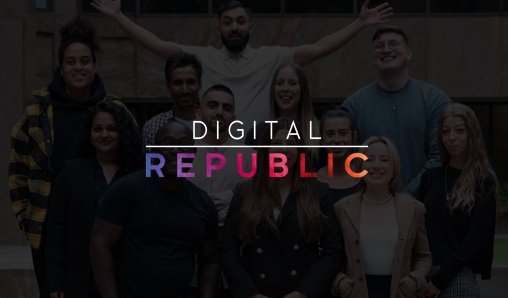
What Millenials Need To Know To Secure A Job In Digital?
This article was originally posted by Bill Schmarzo, CTO, IoT & Analytics Hitachi Vantara. This blog is just an excerpt of the original version.

For my final class this year at the University of San Francisco School of Management, I taught the students using nothing but infographics. Not only was it fun for me, but I think the students enjoyed being able to summarize their learnings from the semester through group discussions centred around the infographics. The infographics provide a visual opportunity to meld the three fundamental concepts that I believe every business leader needs to understand to be successful going forward: Big Data, Data Science and Design Thinking.
So I’m going to use this blog to provide a curriculum that any university can adapt to bring the power of Big Data, Data Science and Design Thinking into their curriculum. These infographics were designed to drive a discussion and debate, so grab your coffee and some friends and start the learning process!
Data Science Curriculum
Any good curriculum needs to start with a class roadmap, and Figure 1 does just that. It provides an overview of the journey that the students will experience as they travel the Big Data, Data Science and Design Thinking path to enlightenment.

To begin the path, students will need to understand:
- Data Science is a team sport that involves key business stakeholders. Jump in; the water is great!
- How the “Think Like a Data Scientist” process can lead to more business and operational success.
- The importance of a well-crafted, well-thought-out business hypothesis canvas to direct the organization’s Big Data and Data Science initiatives.
- Artificial Intelligence and the three levels of Advanced Analytics.
See the blog “How Millennials Should View the World of Data Science” for more details.
What is Data Science?
Many folks, especially folks who come from a Business Intelligence reporting and dashboard background, are confused by Data Science.
Business Intelligence uses data and analytics to create retrospective reports and dashboards on what happened; Data Science uses data and analytics to predict what’s likely to happen and prescribe actions.
The infographic in Figure 2 highlights some of the key differences, most important being the highly-interactive, fail fast / learn faster data science engagement process because as the famous American philosopher Yogi Berra said: “Predictions are hard, especially predictions about the future.”

See the blog “Difference Between Business Intelligence and Data Science” for more details.
Importance of Thinking Like A Data Scientist
Data Science is about identifying those variables and metrics that might be better predictors of performance.
The “Thinking Like a Data Scientist” process outlined in Figure 3 is critical to your Big Data, Data Science and Design success because it provides a process for bringing all key stakeholders together to thoroughly identify, validate, vet, value and priority the use cases that are key to the organization’s business and operational success. […]

What is Artificial Intelligence?
There is probably no more over-hyped, less understood and more powerful concept than “Artificial Intelligence.” What organizations have been doing and will be doing using “Artificial Intelligence” will be staggering. Unfortunately, everyone – and I mean everyone – has their own definition of “Artificial Intelligence” (from the TI-84 to the Terminator). So to be no different, Figure 5 contains my definition of “Artificial Intelligence.” […]

Mastering Design Thinking
I’m a big believer in the power of integrating Data Science with Design Thinking because I have seen the successful results, that is, if you define success around the analytic model’s business relevance and corresponding adoption of the analytic outcomes. Unfortunately, too many folks (including myself originally) think of Design Thinking as too “Foofoo” and not really able to drive material business impact. Oh boy, was I wrong!
Data Science and Design Thinking aren’t different sides of the same coin, they are the same sides of the same coin in the interactive, outcomes-centric approach that they take to ensure 1) you are focused on fleshing out the critical details on the organization’s most important business and operational problems and 2) you have aligned all the right resources and stakeholders to drive successful execution and the resulting organizational alignment and adoption (see Figure 6). […]

Curriculum Summary
So there you have it. Colorful, fun and engaging infographics make several complex topics easier to digest and understand. Any university of any size can adopt this curriculum and start ensuring that they are properly preparing tomorrow’s business and society leaders for a world increasingly being dominated by data science and artificial intelligence.
Yep, the key to good design is tricking people into learning something new.
If you found this article interesting, you might want to check out this post too.
Follow us on our LinkedIn and Twitter to stay up to date with the latest news in the digital data-driven ecosystem
Digital analytics, optimisation, data science or programmatic expert, and looking for a job?
Check out our latest live vacancies here
Digital agency looking to expand your team with top-tier talent?
Send us your jobs here
Get in contact with us!


